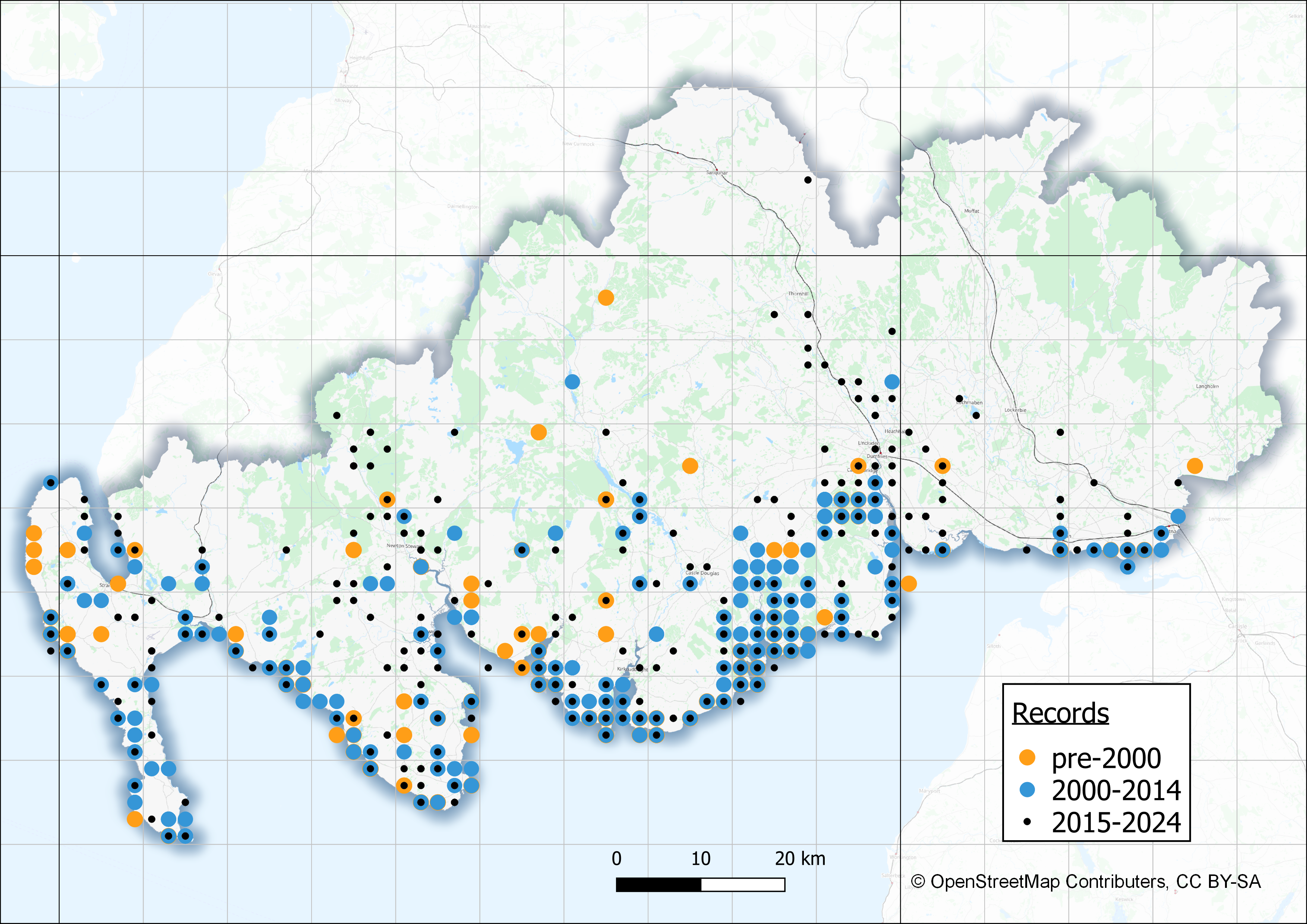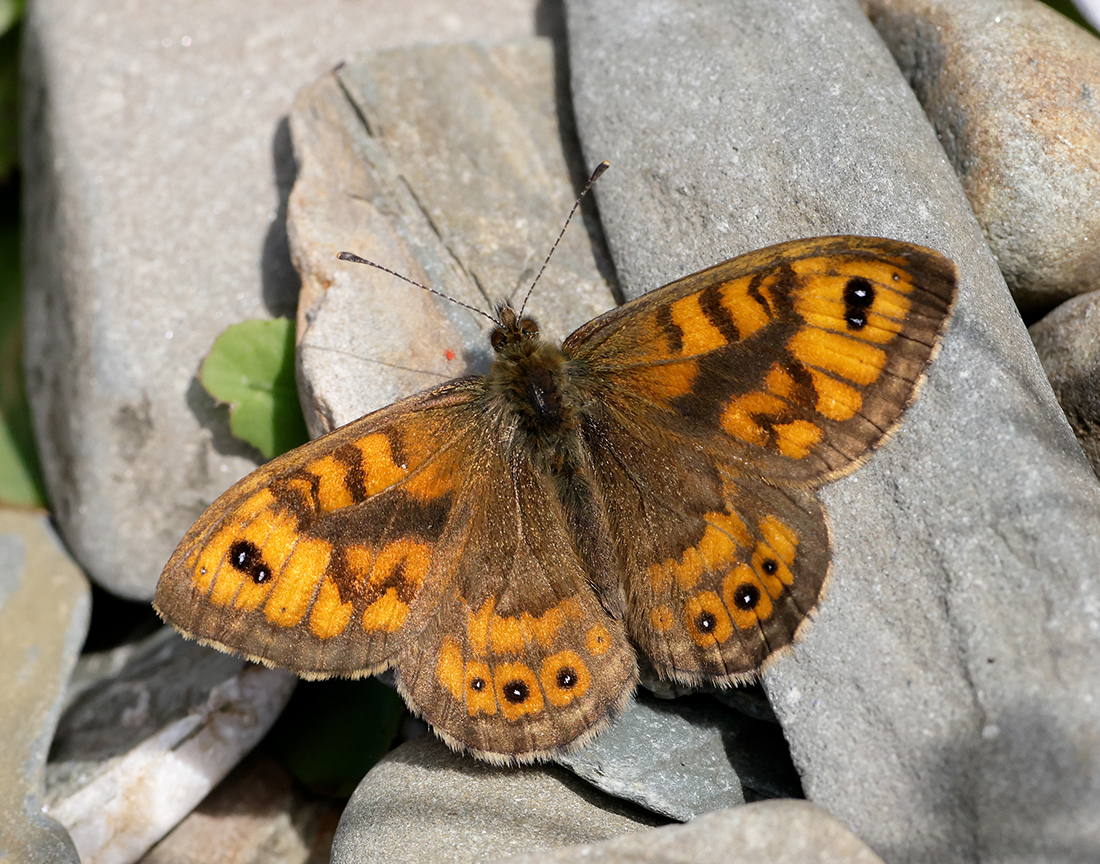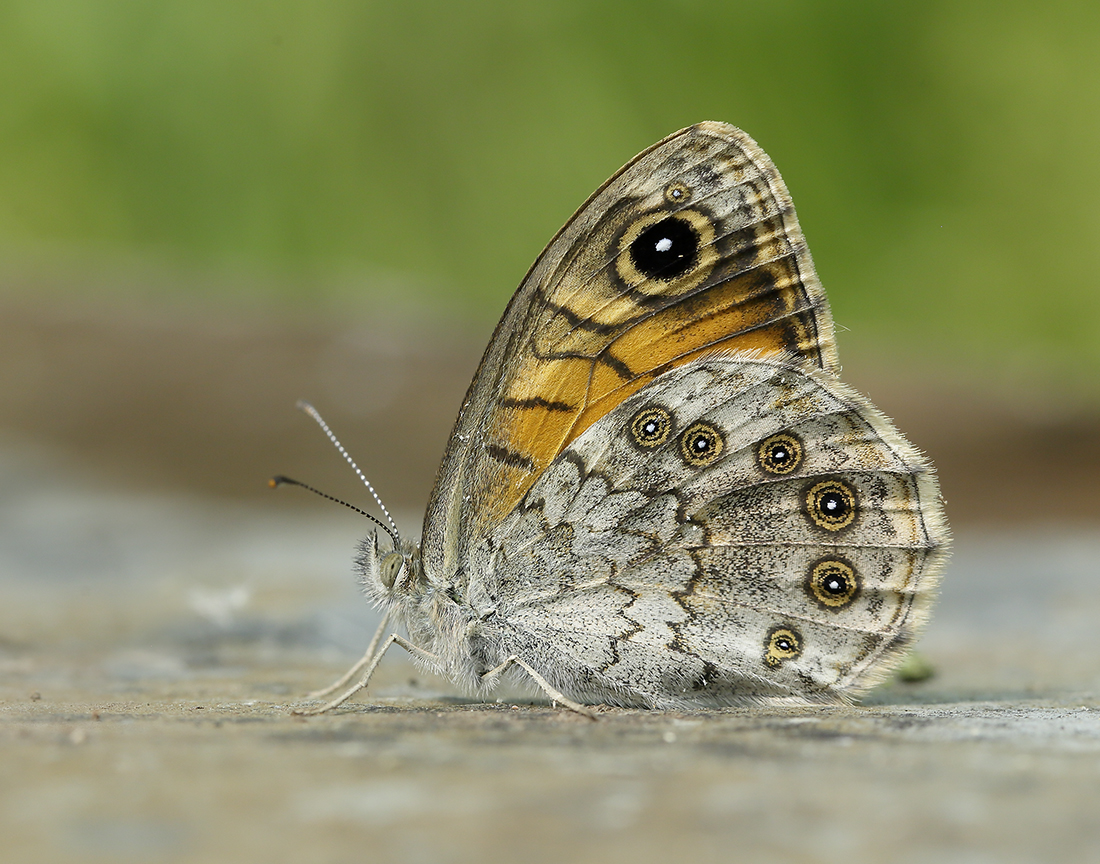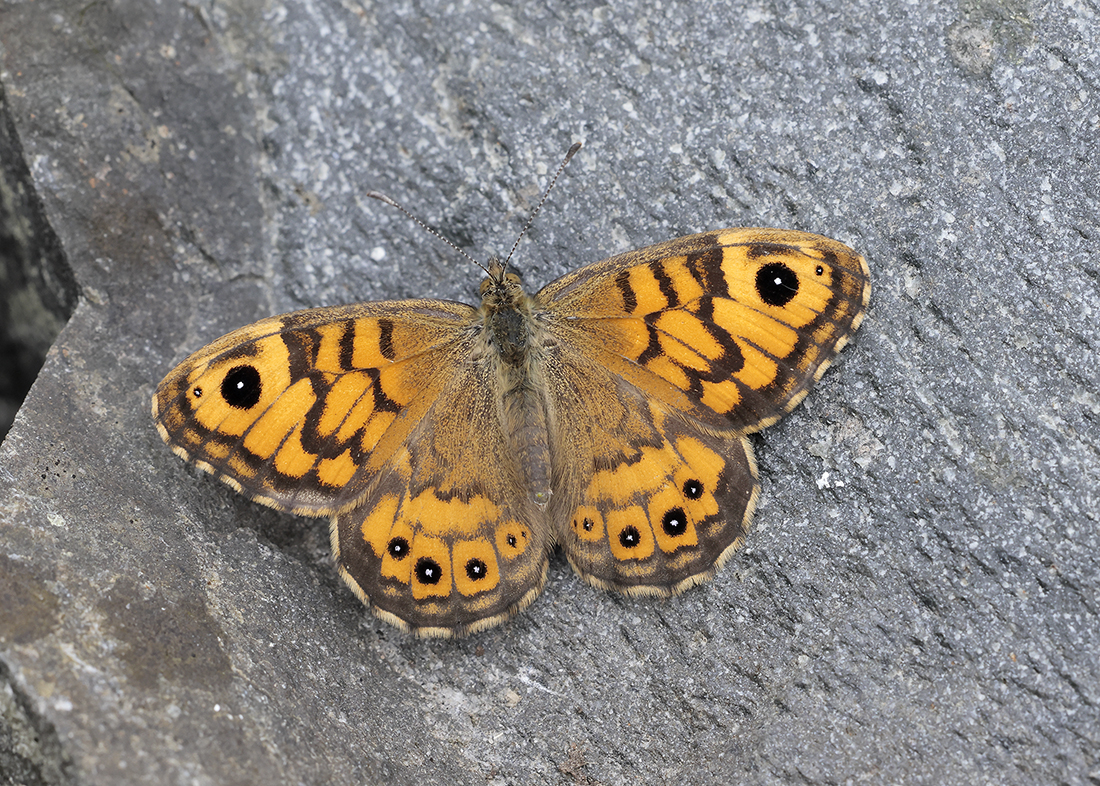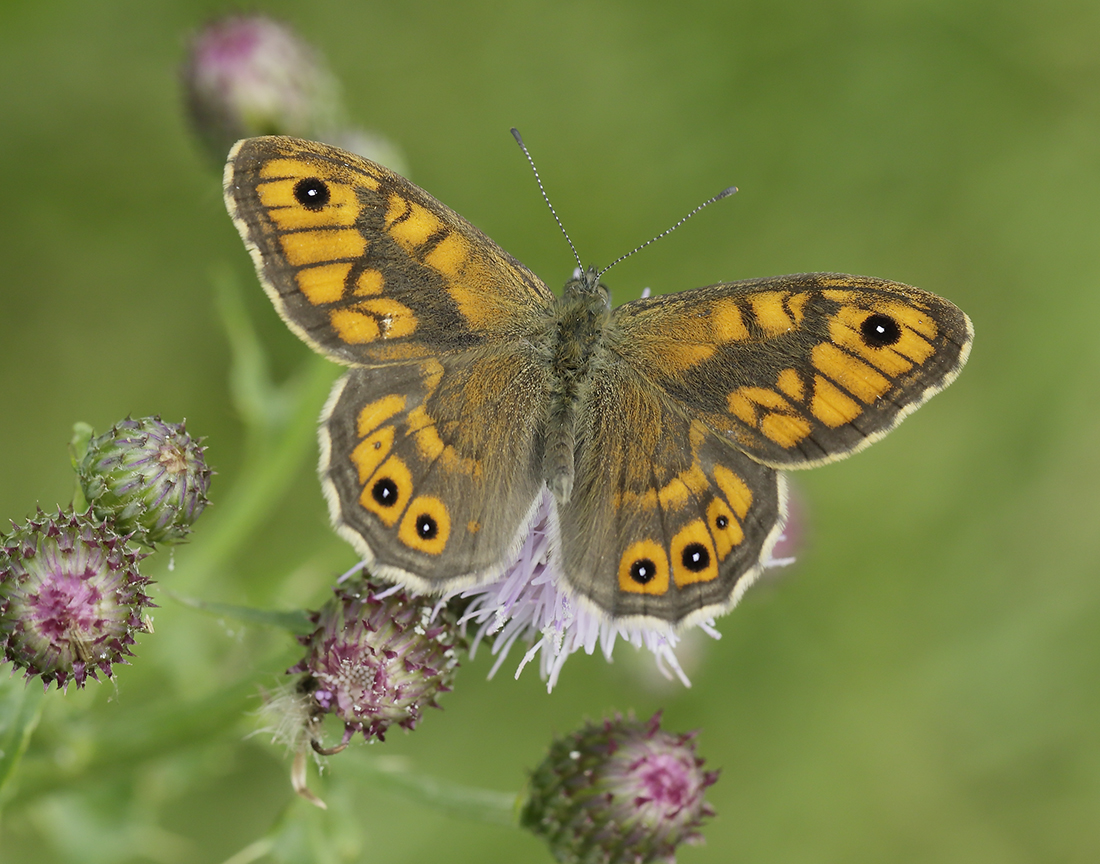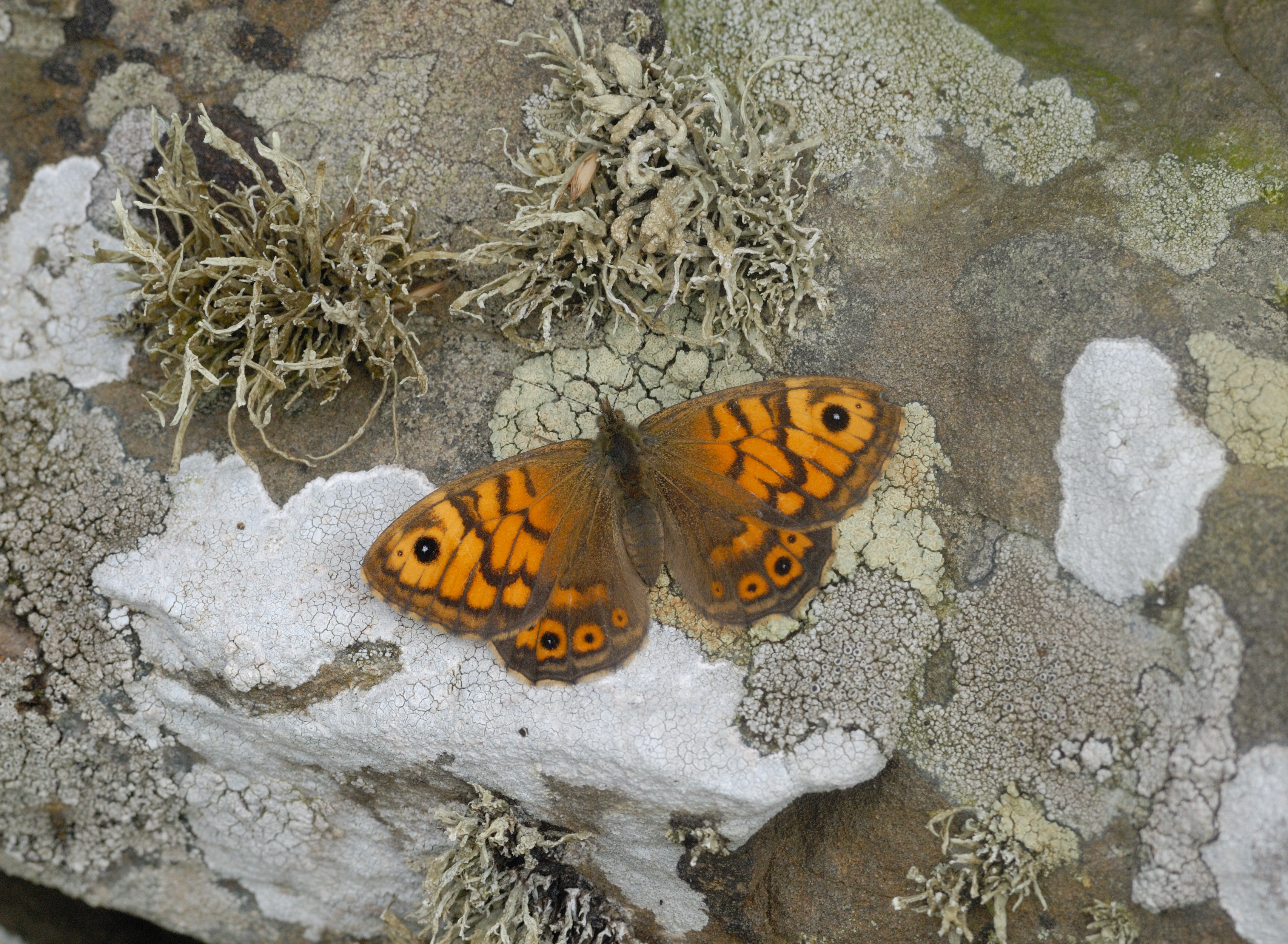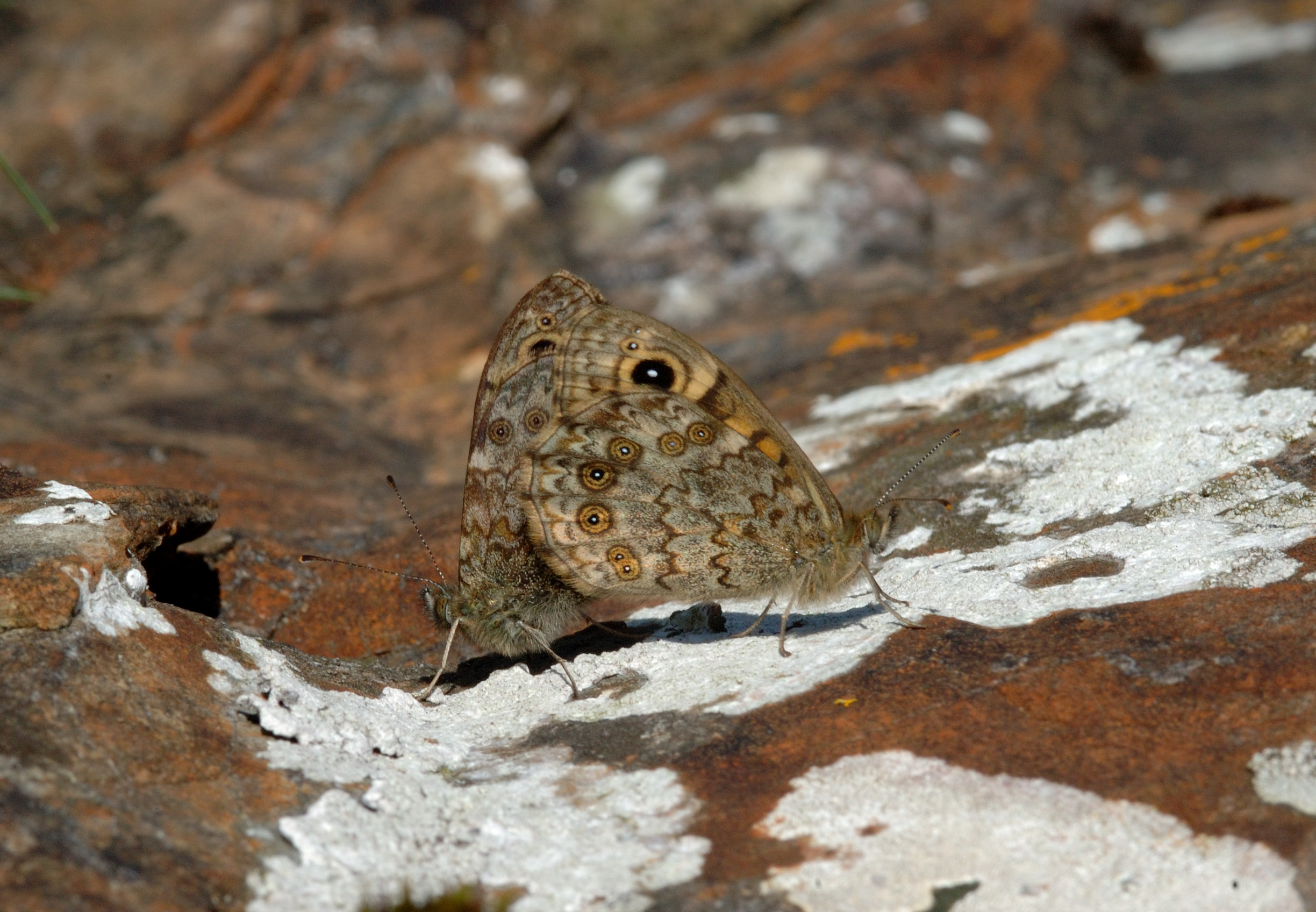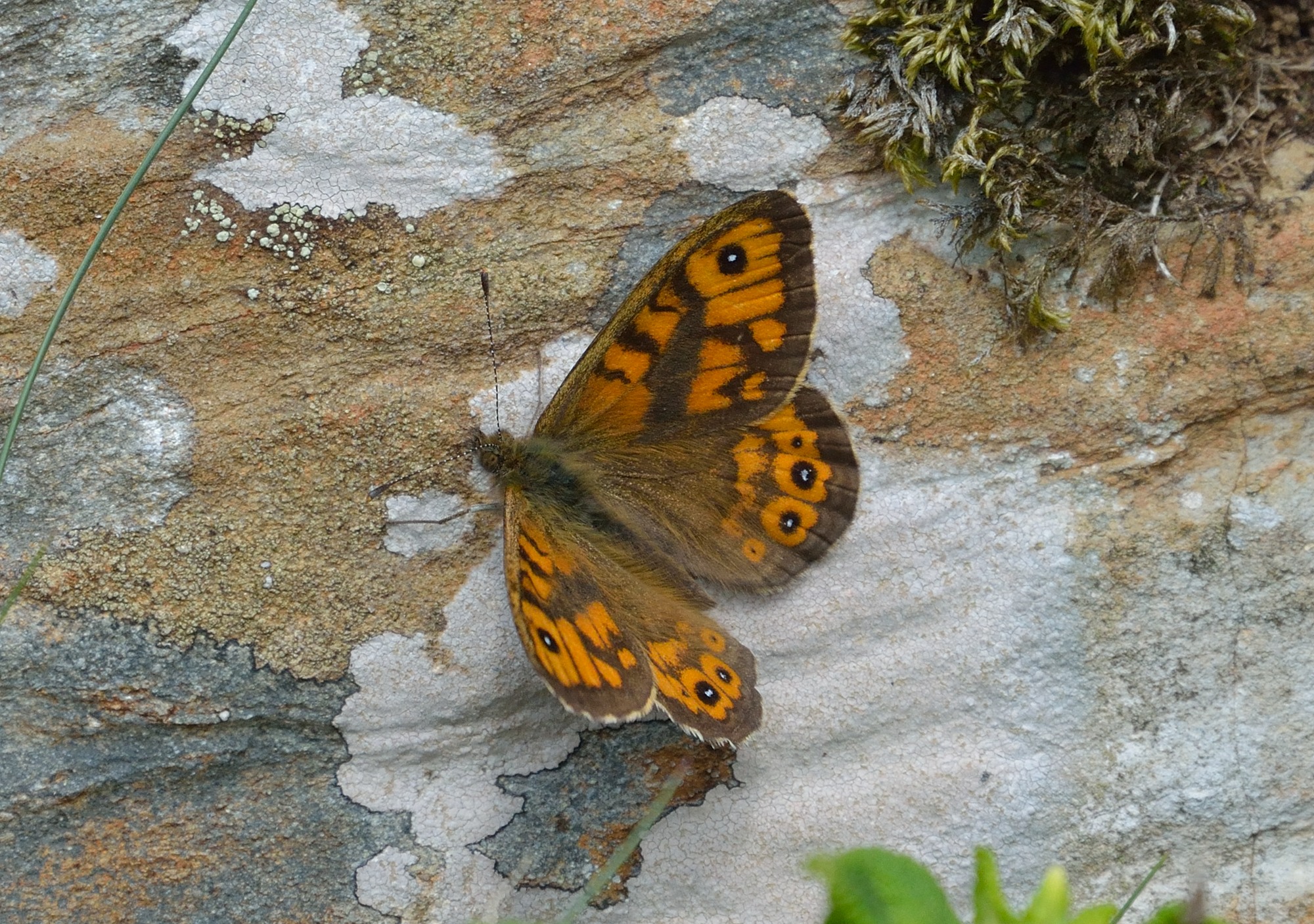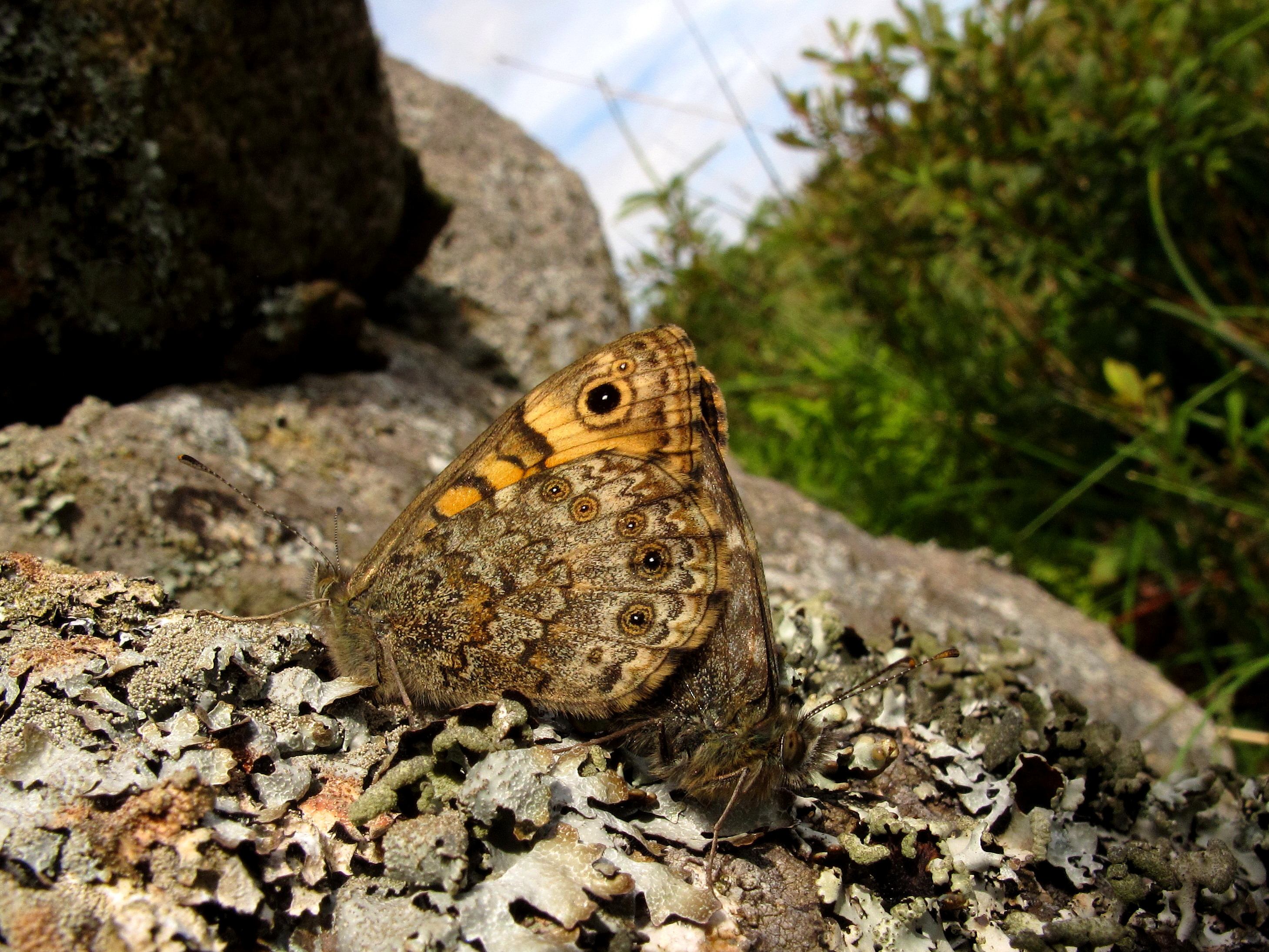The Wall, or Wall Brown, receded from Scotland in the 19th century in response to a run of cooler summers, although it clung on in south-west Scotland. Since the mid-20th century it has been spreading north, primarily along the coastlines, but in Dumfries and Galloway there are now many inland colonies.
In southern Britain and other parts of northern Europe, the Wall is doing very badly. It has been suggested that warmer weather is allowing the Wall to develop faster, and trying, but failing, to fit in three generations a year, instead of the normal two. Much of the last generation of the year may be doomed, the caterpillars not being sufficiently developed to survive the winter.
In the short term it seems likely that the Wall will continue its spread and will colonise more inland sites. However, if temperatures carry on increasing then the problems that are afflicting it in the south may start to have an impact here.
Identification
In flight a Wall might be confused with a fritillary or a Comma, as they all share golden-orange wings with dark brown markings, but once settled the characteristic Satyrid ‘eyespots’ are a giveaway.
Life cycle & flight period
The first generation of adults emerge in early May and fly until late June, with a second generation emerging in late July and flying until early October. Overwinters as a caterpillar.
Larval foodplant
The females choose fine-leaved grasses growing in very warm situations, surrounded by bare ground, on which to lay their eggs.
Habitats
The Wall is a famously sun-loving butterfly that spends much time basking on sunny slopes and, of course, walls. It can be found in open, sunny habitats with sparse vegetation, particularly coastal grasslands, but also along river banks and forestry tracks, and in urban areas.

